Graphics and Throttling Performance
Does the weaker-than-expected CPU performance affect the graphics capabilities of the V30? Let's find out.


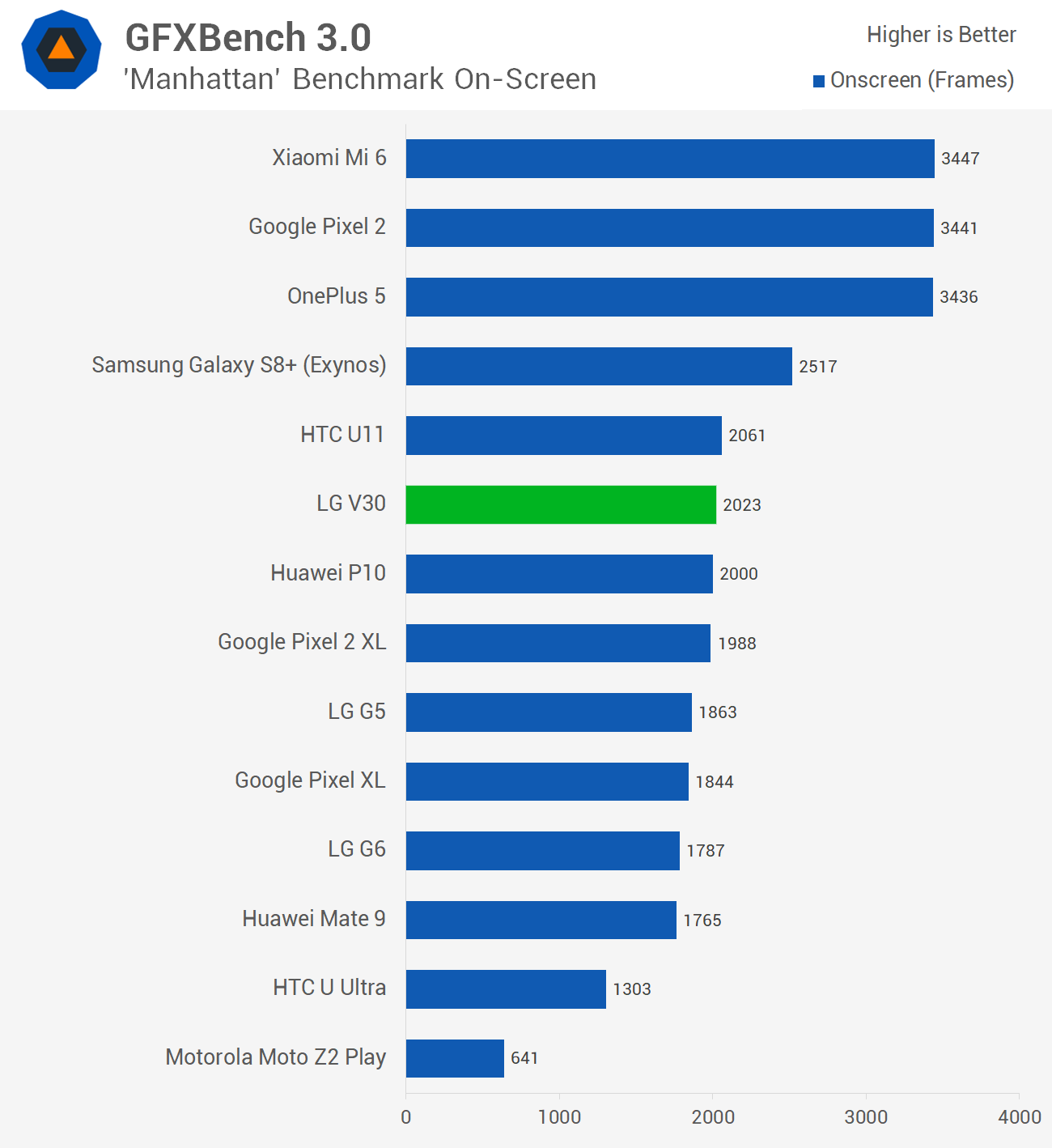
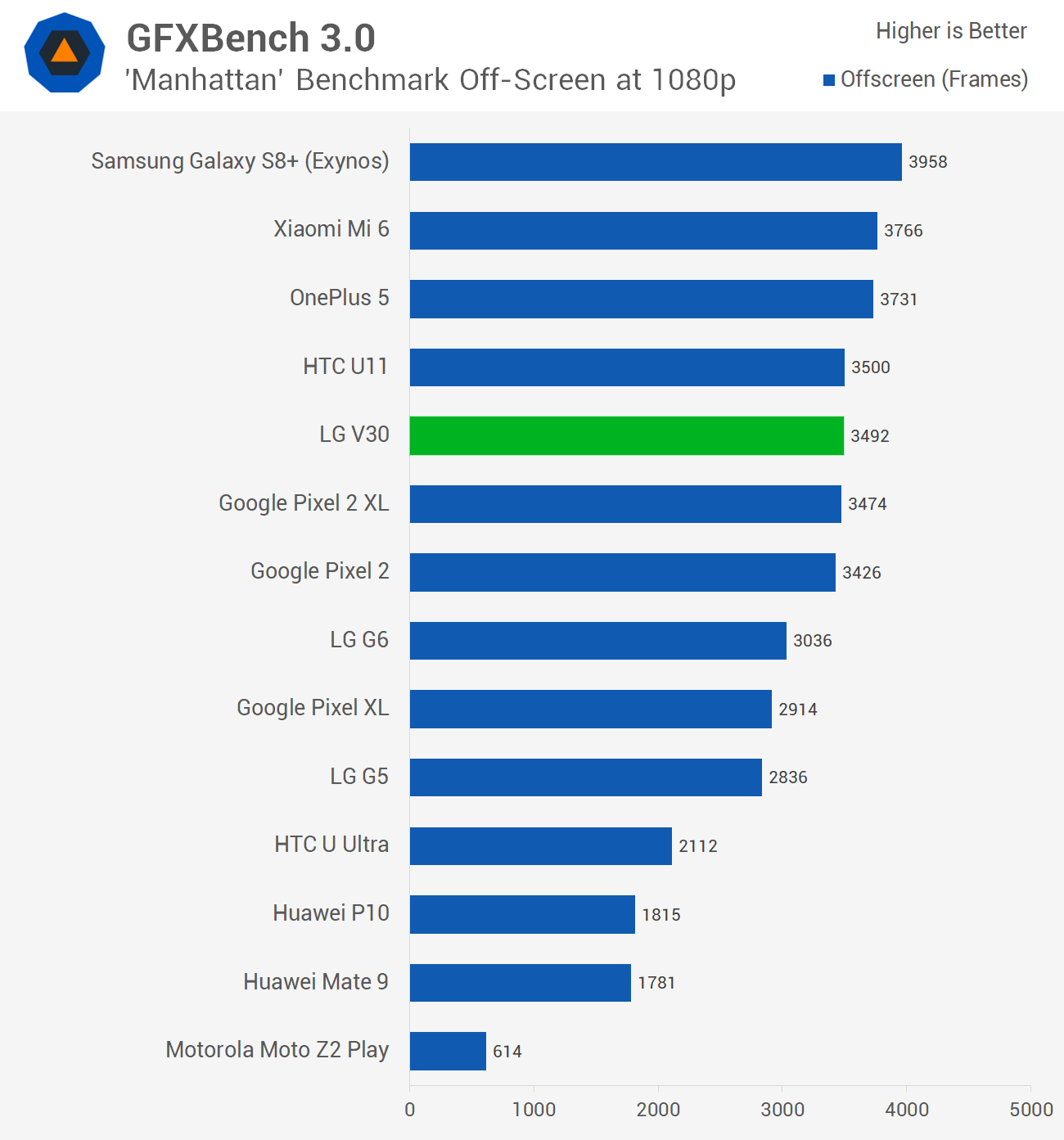
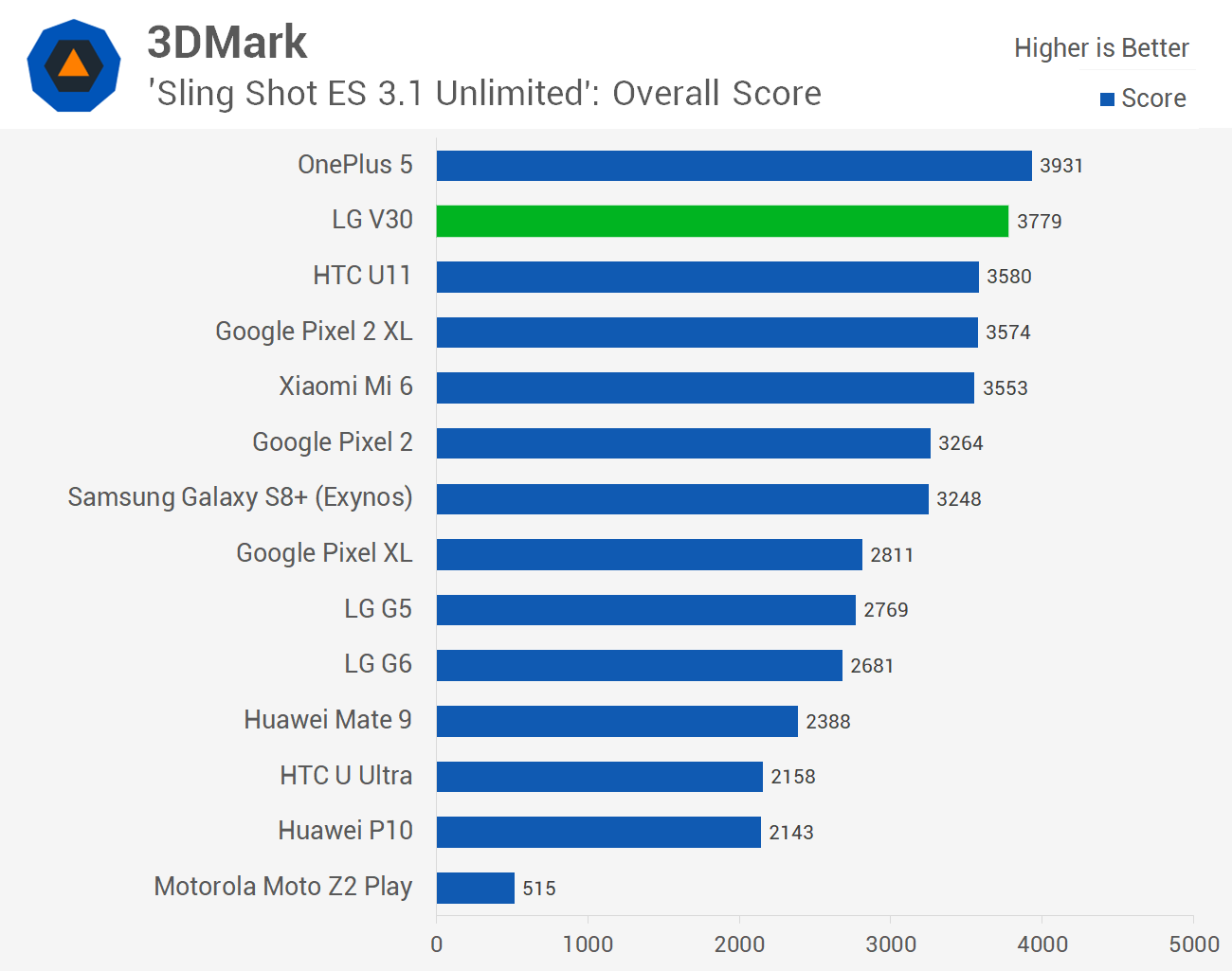
The good news is that, for the most part, the V30's graphics capabilities are not affected by the weaker CPU performance. It's only in CPU limited situations that I observed lower-than-expected graphics performance, and that's in benchmarks like 3DMark Ice Storm and GFXBench T-Rex. In more intensive workloads where the GPU is the limiting factor, we get the expected performance of the Adreno 540.
In real world gaming scenarios, most games that would be CPU limited are already running at 60 FPS, which is the refresh rate limit of the display. The T-Rex benchmark, for example, runs at 60 FPS on-screen but closer to 100 FPS off-screen, and that extra 40 FPS is basically redundant. So the actual impact of the CPU limit is negligible. And of course if you're playing the most intensive Android games, you'll likely max out the GPU first as the display has a huge 4.1 million pixels that must be rendered.
Compared to other handsets, the V30 provides 25% more GPU performance than the G6 on average, which is powered by the Snapdragon 821. Those coming from a two-year-old Snapdragon 810 handset can expect more than double the GPU performance.
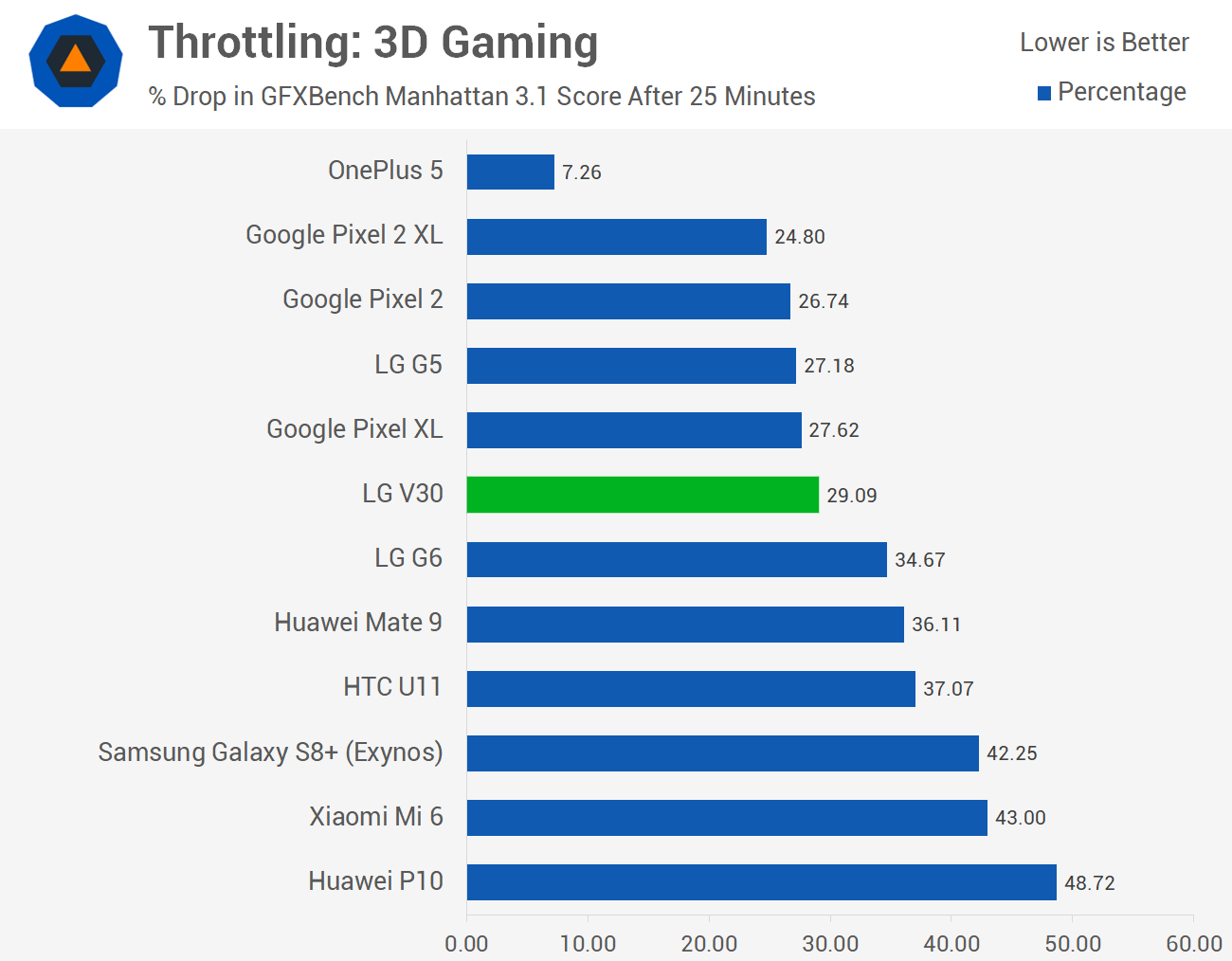
The V30 throttles to a typical extent in 3D-heavy workloads, dropping its performance by approximately 30 percent after 30 minutes of intensive gaming. While not quite as bad as some other flagship phones, particularly those that opt for non-Qualcomm SoCs, you won't achieve peak performance for very long.
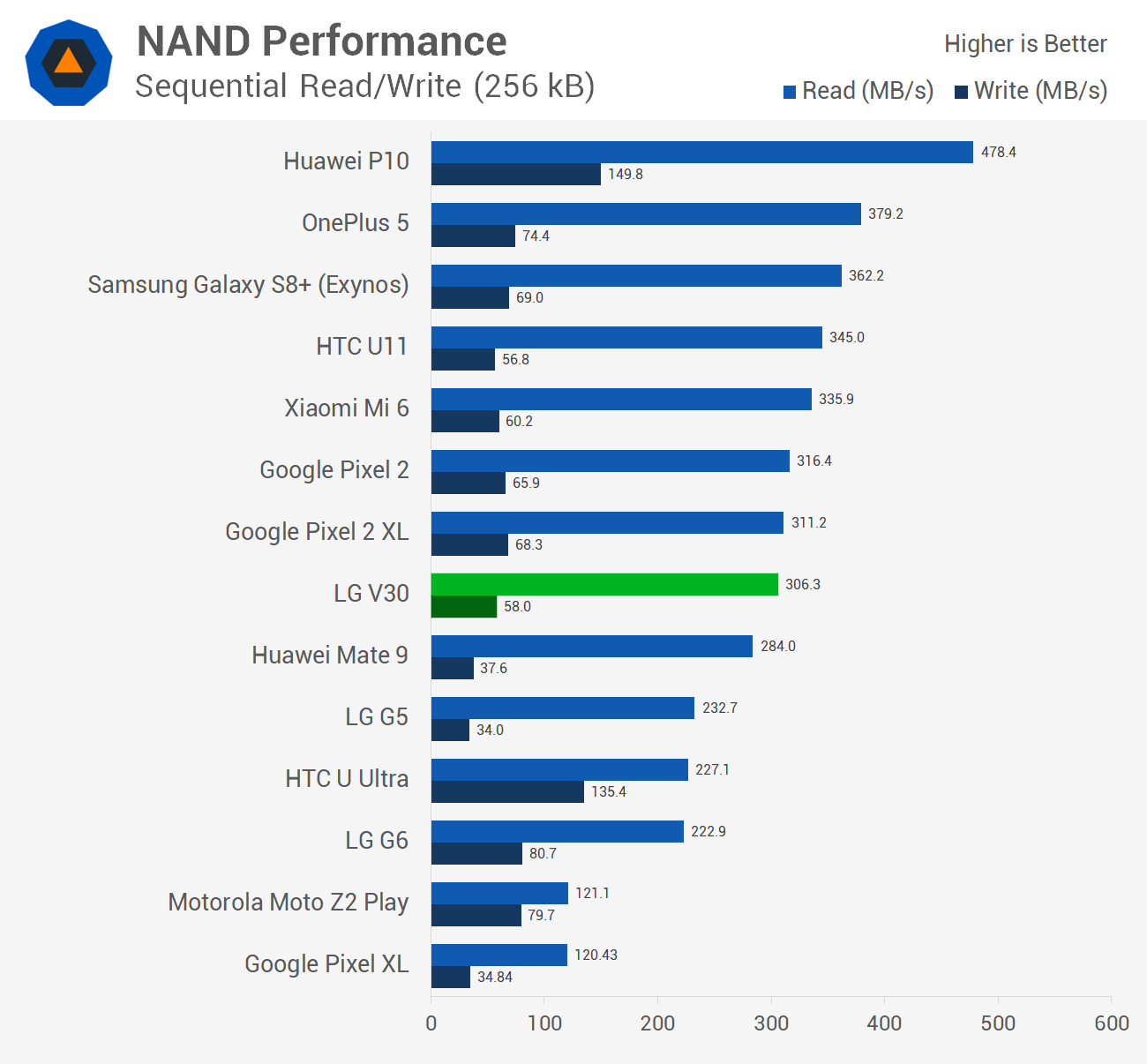
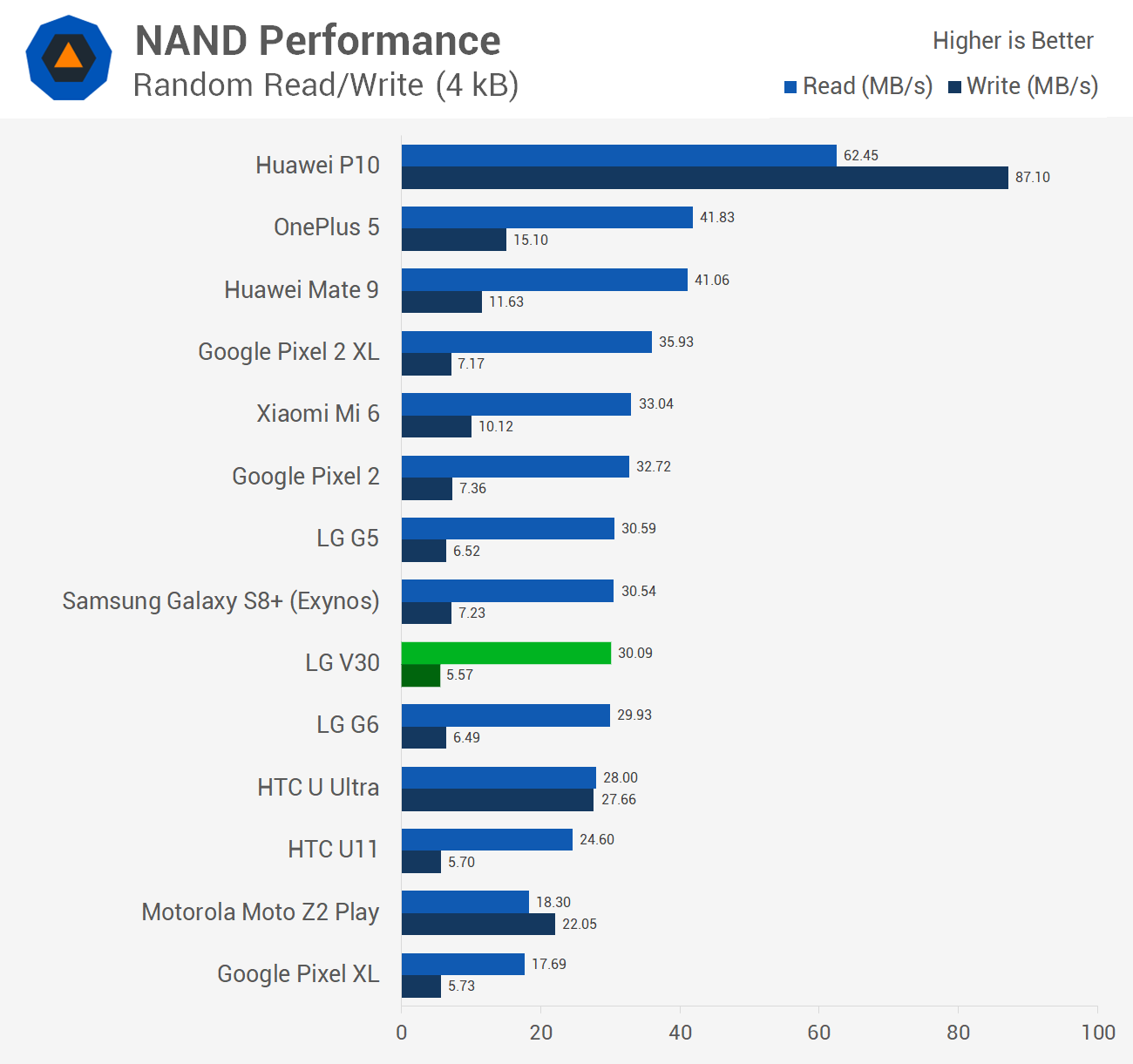
The NAND flash used in the V30 is a fairly standard unit for smartphones, which leads to performance similar to other handsets like the Pixel 2 series, HTC U11 and Xiaomi Mi 6. In terms of sequential performance, the chip is different to what is used in the G6, providing faster sequential reads at the expense of reduced sequential writes. Random performance is identical to the G6; mid-table for a flagship.
